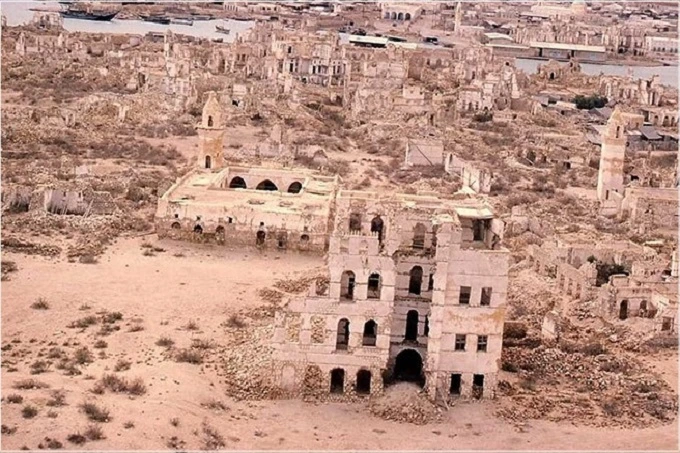Why did Suakin Island turn into a ghost island

The port of Suakin is said to be one of the oldest in Africa. Since the beginning of time, Muslims have been making the journey to Mecca and Medina from this location as part of the hajj pilgrimage. The most important stop along the trade route from East Asia to Africa and Europe passed there. It was one of the most important trading ports on the Red Sea for hundreds of years, and it was also one of the cultural and civilizing centers of Islamic civilization on the East African coast. Why did Suakin begin to see a population loss in the early 20th century and eventually become a ghost town, with just the remains of once-majestic buildings and a cemetery remaining?
An ancient city whose history goes back centuries
Because of its location at a crucial junction between Saudi Arabia and Port Sudan, the island now forms part of Sudan and is of the highest significance to the country. This port is barely fifty kilometers north of Suakin and is now Sudan’s most modern and biggest port.
Since ancient times, the town of Suakin, located on an island in the northeastern part of Sudan, has been an important trade and cultural center. It was a large port on the coast of East Africa and one of the most important. On the western side of the Red Sea is a low, oval-shaped island that is completely flat, and it occupies a secluded spot in the middle of a charming little bay. There are two spherical coral islands here, both of which are in shallow water. One is completely uninhabited, and the only thing found on it is an old cemetery. The town of Suakin is located on the opposite island to the south, which is called Suakin. It is linked to the mainland by a small man-made road.

Because of the customs revenue, the island has consistently brought in a substantial amount of money. Gold dust and ivory were often purchased here by Indian merchants, and pearls were mined from the islands in the area. Fishing and producing various items for the home were the primary occupations of the inhabitants. According to historians, up to the 14th century, it served as the epicenter of Christian civilization along the African coast. The Ottomans retook it, and eventually, it was converted to Islam.
The origins of the huge port city are a mystery, and nobody knows how it started. Archaeological research on Suakin has never been carried out to its full potential. Only what is written about it in ancient manuscripts has been deciphered up to this point. There are references to this location in various historical sources and travellers’ stories. Claudius Ptolemy, an ancient Greek scholar, wrote about it and described it as a rounded island at the end of a long bay. Limen Evangelis was the name given to this port back when it was in its prime under Roman rule. The name Suakin wasn’t mentioned for the first time until the 10th century, when al-Hamdani mentioned it. He referred to it as a great ancient city.
At that time, Suakin was the strong competitor of Aydhab, another port located on the Red Sea. That was located more closely to Egypt and was under its control. The Egyptians made many failed attempts to seize control of the territory from the native Beja tribe. The conflicts occurred on a very regular basis. Suakin finally won in the end. The fall of Aydhab occurred in the second part of the 15th century. Since then, the island’s old city has had no viable competitors. It continued to hold the leading position until the year 1922.
Why Suakin island turned into a ghost town

Port Sudan was a brand new port constructed by the British at the beginning of the 20th century to the north of Suakin. The once-thriving island community rapidly started to lose its inhabitants. People were departing because they could no longer sustain themselves on the food it provided. Suakin went from being an elegant port city and cultural center to becoming a dirty ghost town in a very short time. Within a decade, the uninhabited island was empty and devoid of inhabitants, the harbor had been removed, and the docks had deteriorated into a shoal that prevented ships from passing.
Only the remnants of what was once majestic structures are all that remain today. Coral stone, formerly used to construct once-grand homes, is slowly but surely being worn away. While exploring these remains, one can still see the majestic and alluring influence that Suakin’s diverse cultural heritage, ranging from Venetian to Ottoman, has had on the city throughout its history. Every building showcases the stunning architecture that the city is known for.

The Sudanese authorities handed Suakin Island over to Turkey. When the Ottomans ruled Africa, one of the most important ports on the continent had its greatest era of prosperity. The Turks’ goal is to return it to the splendor it once had. The President of Turkey has said that the West is responsible for degrading their country and turning it into a ghost island. The Turkish officials have already begun the process of aggressively reconstructing the ancient edifice that is located on the island. They want to completely repair the area’s infrastructure, transforming the historic city into a great cultural and tourism center.




